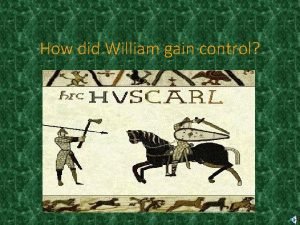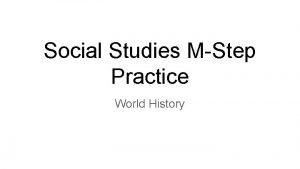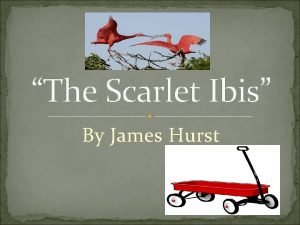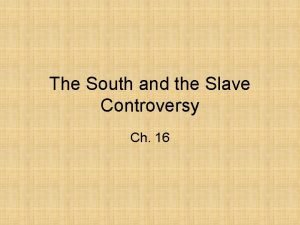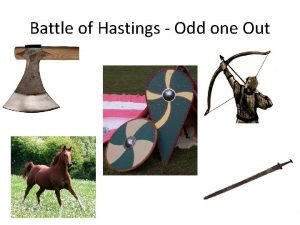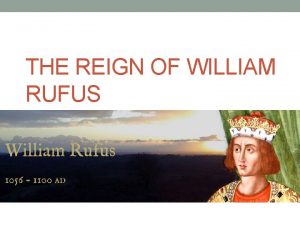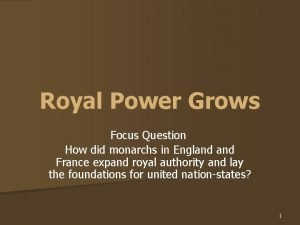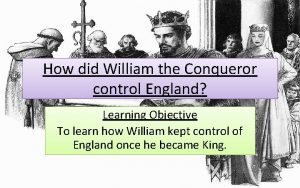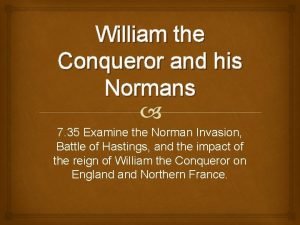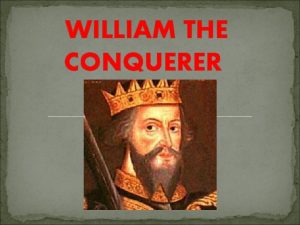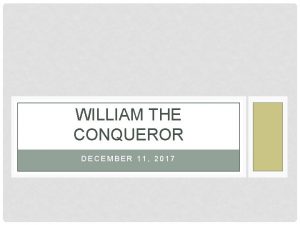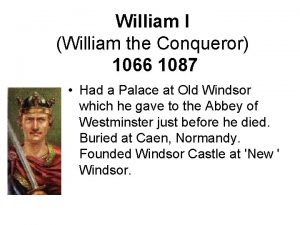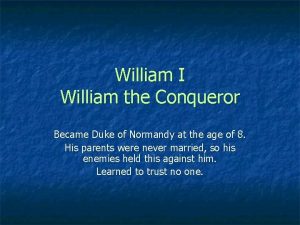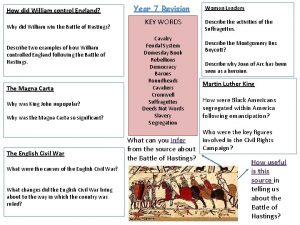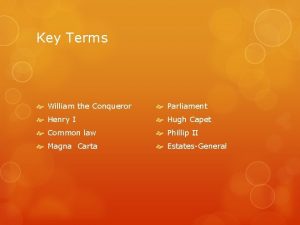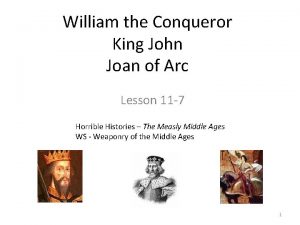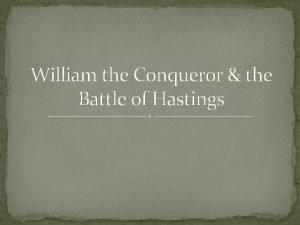How did William the Conqueror secure his control



















- Slides: 19

How did William the Conqueror secure his control over Saxon England? Key Stage 4: Norman England Learning Aims and Outcomes • Investigate the different ways in which William I secured the conquest • Describe & explain the different ways castles helped to consolidate Norman control of England Relates to: AQA – Norman England, c 1066 -c 1100 – military innovations, including castles and establishing and maintaining control EDEXCEL – Anglo-Saxon and Norman England, c 1060 -88 – Reasons for building castles; their key features and importance OCR B – The Norman Conquest, 1065 -1087 – The nature and purpose of Norman Castles in England to 1087

York Castle, known as Clifford's Tower The first timber castle and the motte (mound) were built here by order of William the Conqueror in 1069

STEP 1: Look carefully at the photograph of York Castle Did you know? • A castle is defined as a fortified residence belonging to nobility th • The first castles were built in France in the 10 century (900 s) • Castles were introduced to England, along with the feudal system, by the French after the Norman Conquest of 1066

STEP 2: Think about the different ways in which a castle could help William keep control over his new kingdom • Write a list of these different ways - you should split your list in to two categories, as in the table below, give each reason a number (NB: Need help getting started? Then use the hints on the next slide) The PHYSICAL effects of castles The PSYCHOLOGICAL effects of castles

Hint: Castles…. . (Click on the ? To revel the hints) ? Intimidated people ? Provided work for local people Provided a place to keep soldiers ? Protected the Norman lord ? Constantly reminded people who was in charge Deterred people from attacking the Norman Lord ? ? ? Altered the local landscape Destroyed parts of some existing towns and villages ?

Look at the following selection of castles • Can you find any that show examples of/represent your list of reasons? – e. g. York Castle is an example of how castles made people feel that they were constantly being watched over • When you have chosen your castles copy and paste thumbnail images in to the table provided (after the slides of castles)

Pevensey Castle, Pevensey, East Sussex An aerial view of Pevensey Castle. The site was originally used as a Roman fort. After the Norman Conquest it was given to William the Conqueror's half-brother who used the Roman walls to construct a castle. Pevensey Castle

Tower of London, London The River Thames and the Tower of London. The main 'White Tower' was built in 1078 and from here the country was governed during the medieval period. Tower of London

The Keep, Dover Castle, Dover, Kent The strategic importance of Dover has long been recognised. The great Keep, built in the 1180 s by King Henry II to provide both security and accommodation, was the strongpoint of the medieval Castle. Dover Castle

Carisbrooke Castle, Isle of Wight Standing on a partly-artificial elevation, Carisbrooke Castle occupies site of an earlier Saxon stronghold which replaced a Roman fort. Carisbrooke

Old Sarum, Salisbury, Wiltshire An aerial view of the Norman castle at Old Sarum, built on the site of an Iron Age hillfort. The castle declined in the 13 th century when New Sarum (Salisbury) was founded nearby. Old Sarum Castle

Castle Acre Castle, Norfolk The castle was founded soon after the Conquest. In the 12 th century it was converted into a stronger keep, defended by stone walls and ditched earthworks. Castle Acre

Totnes Castle, Totnes, Devon A Norman motte-and-bailey castle was built to dominate the Saxon town. The shell of the keep and curtain wall date from a 14 th-century reconstruction of the castle. Totnes Castle

Restormel Castle, Lostwithiel, Cornwall Built on a spur overlooking the River Fowey with an unusual circular keep (circa 1100), it is one of the oldest and best preserved Norman motte and bailey castles in Cornwall Restormel Castle

Reason No. (from 1 st table) Thumbnail of castle This castle represents this reason because. . . Step 4: Using the completed table above, write a short paragraph answering the question: How did William the Conqueror secure his position after the conquest of 1066?

Extension/Further Work

Step 5: Were castles William's only way of securing power? Use the 'students notes' provided below to discover more about castles and William's way of ruling England Student Notes • The Normans imposed several major changes on the Anglo-Saxon way of life. The most notable were the introduction of the Feudal System, Castles and French as the official language at court • After the Battle of Hastings William gained security in England by granting areas of land to trusted Norman nobles, who in return had to perform certain duties such as building and defending castles and providing knights for the king. This was all part of the Feudal System (see below) • In 1070 William founded Battle Abbey on the site of the Battle of Hastings. He also introduced 'tithes', a tax whereby thepopulation had to pay one-tenth (a tithe) of their annual increases in profit to the church • In 1086 William commissioned the Domesday Book

The Feudal System • The King owned all the land. He granted land to: • Tenants-in-chief (Barons and Bishops), who in return swore an oath of loyalty to the king. They agreed to build castles and provide knights for his army. The tenants-in-chief in turn granted land to: • Knights, who in return swore an oath of loyalty to them and promised to fight for the king’s army for 40 days a year. The knights in turn granted land to: • Peasants, who in return swore an oath of loyalty to them and had to provide free labour, food and services for the knight

Find more teaching resources at: Historic. England. org. uk/Education
 How did william control england
How did william control england Why william won the battle of hastings essay
Why william won the battle of hastings essay William the conqueror leadership qualities
William the conqueror leadership qualities M step practice
M step practice Edgar allan poe the conqueror worm
Edgar allan poe the conqueror worm Byzantine art
Byzantine art Conqueror of central asia
Conqueror of central asia Cisco secure access control server for windows
Cisco secure access control server for windows How secure is smtp server
How secure is smtp server When the two brothers race home to beat the storm, doodle
When the two brothers race home to beat the storm, doodle William shakespeare about his life
William shakespeare about his life Lovejoy murder
Lovejoy murder Why did william win the battle of hastings?
Why did william win the battle of hastings? How did william rufus die
How did william rufus die William shakespeare was born on april 23 1564
William shakespeare was born on april 23 1564 Sutronwin
Sutronwin 13 colonies foldable
13 colonies foldable How did royal power in england progress
How did royal power in england progress Did william pitt open the ohio river valley
Did william pitt open the ohio river valley 8 steps of reality therapy
8 steps of reality therapy
